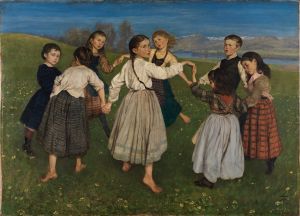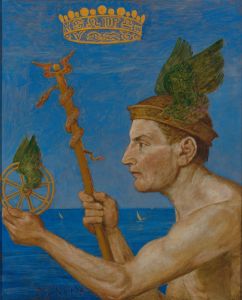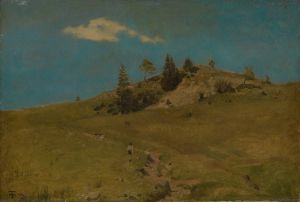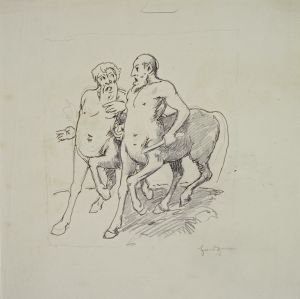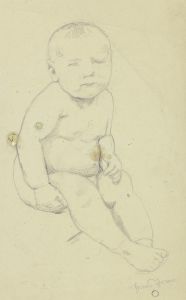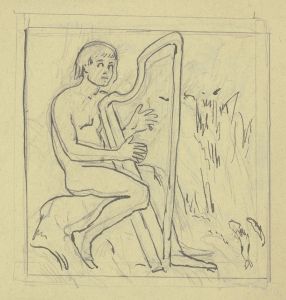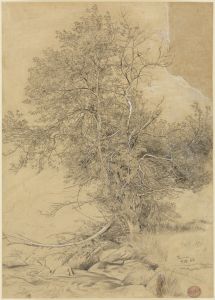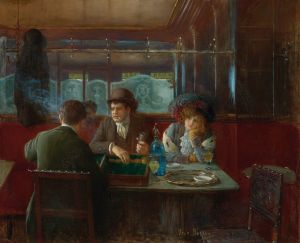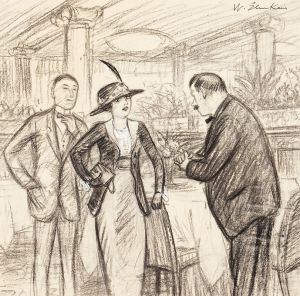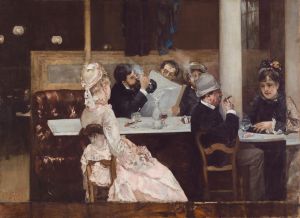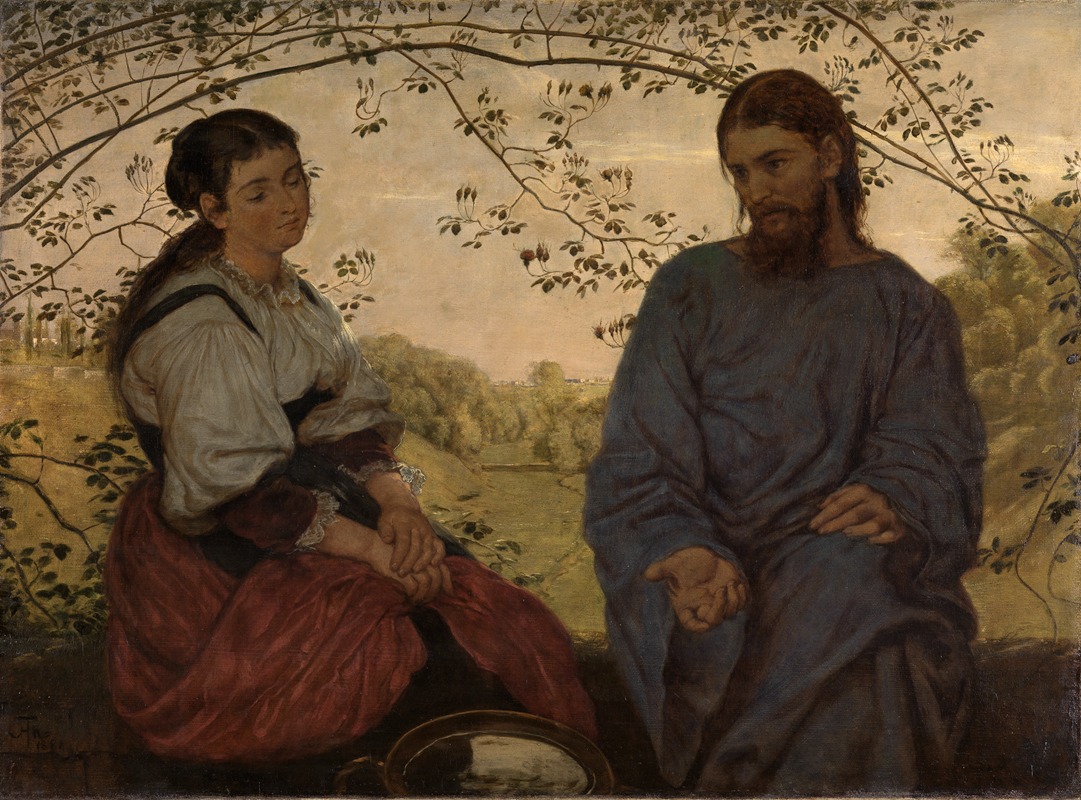
Christus und die Samariterin
A hand-painted replica of Hans Thoma’s masterpiece Christus und die Samariterin, meticulously crafted by professional artists to capture the true essence of the original. Each piece is created with museum-quality canvas and rare mineral pigments, carefully painted by experienced artists with delicate brushstrokes and rich, layered colors to perfectly recreate the texture of the original artwork. Unlike machine-printed reproductions, this hand-painted version brings the painting to life, infused with the artist’s emotions and skill in every stroke. Whether for personal collection or home decoration, it instantly elevates the artistic atmosphere of any space.
Hans Thoma was a German painter born on October 2, 1839, in Bernau, in the Black Forest region of Germany. He is known for his landscapes, portraits, and mythological scenes, often infused with a sense of realism and a deep connection to nature. Thoma's work is characterized by its meticulous attention to detail and a style that bridges the gap between Romanticism and Realism.
One of Thoma's notable works is "Christus und die Samariterin" (Christ and the Samaritan Woman). This painting depicts the biblical story from the Gospel of John, where Jesus encounters a Samaritan woman at Jacob's well. The narrative is significant in Christian theology as it highlights themes of grace, redemption, and the breaking of social barriers. In the story, Jesus speaks with the woman, asking her for a drink, which leads to a profound conversation about living water and spiritual truth.
Thoma's interpretation of this scene captures the moment of interaction between Jesus and the Samaritan woman. The painting is noted for its serene and contemplative atmosphere, reflecting Thoma's ability to convey deep spiritual and emotional themes through his art. The figures are rendered with a sense of realism, and the composition is balanced, drawing the viewer's attention to the central interaction.
The setting of the painting is typically pastoral, in line with Thoma's affinity for natural landscapes. The background often includes elements such as trees, hills, or a well, which are common in Thoma's work and serve to ground the biblical narrative in a familiar, earthly context. This approach not only emphasizes the humanity of the figures but also connects the divine encounter to the natural world, a recurring theme in Thoma's oeuvre.
Hans Thoma's work, including "Christus und die Samariterin," is appreciated for its technical skill and the way it captures the essence of the subjects he portrays. Thoma was influenced by various artistic movements and figures throughout his career, including the Nazarene movement and artists like Albrecht Dürer and Peter von Cornelius. His work often reflects a synthesis of these influences, resulting in a unique style that is both traditional and innovative.
Thoma's contributions to art were recognized during his lifetime, and he held several prestigious positions, including a professorship at the Academy of Fine Arts in Karlsruhe. His legacy continues to be celebrated in Germany, where his works are displayed in various museums and galleries.
"Christus und die Samariterin" exemplifies Thoma's ability to blend narrative, emotion, and landscape, creating a piece that resonates with viewers on multiple levels. Through this painting, Thoma not only illustrates a biblical story but also invites contemplation on the universal themes of compassion, understanding, and the breaking of societal boundaries.






